| 14 January |
• yesterday • tomorrow |
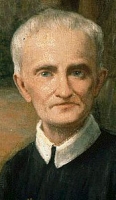
Peter, Peerke
Son of Arnold Denis Donders and Petronella van den Brekel. Peter grew up poor, rarely getting to school, working at home and in a local factory with his brother Martin, and dreaming of becoming a priest. With the help of local priests and a wealthy patron, he enter the seminary at the College of Herlaar at age twenty-two, initially working as a servant while he studied. At age twenty-six her applied to the Franciscans, Jesuits and Redemptorists, but was turned down by each. Ordained on 5 June 1841 after nearly ten years of work.
Missionary to the Dutch colony in Surinam, Dutch Guiana, arriving in Paramaribo on 16 September 1842. Evangelized and ministered to plantation slaves, constantly in touch with his superiors to complain of the terrible treatment of the workers. He baptized at least 1200 in his first couple of years, and worked among the sick during an epidemic in 1851. Transferred to the leper colony of Batavia in 1856. There he ministered to both the body and soul of the 600 or so patients. His constant harassment of the colonial authorities resulted in much better care for the patients.
When the Redemptorists arrived in Surinam in 1866 to take charge of the mission, Peter joined the Order, becoming a 57 year old novice in 1866, and making his final vows on 24 June 1867. He then returned to Batavia with a crew of Redemptorists ready to help the lepers. With the added help, Father Peter expanded his work, and began to evangelize the Indians in the region. He learned their languages and had made a good start on the work when his health failed. His superiors transferred him to easier assignments, but as the end approached, Peter returned to Batavia where he worked with the patients until his end.
27 October 1805 at Tilburg, North Brabant, Netherlands
• 14 January 1887 at Batavia, Saramacca, Surinam of natural causes
• buried there
• 23 May 1982 by Pope John Paul II
• on 11 April 1978, the Congregation for the Causes of Saints declared miraculous the cure of Louis John Westland from osteomyelitis by Blessed Peter's intercession
We can say that he was an apostle of the poor. In fact, he was born into a poor family and had to lead the life of a worker before he could pursue his priestly vocation. He dedicated his whole priestly life of the poor. In addition, he is an invitation and an incentive for the renewal and reflourishing of the missionary thrust which in the last century and in this one has made an exceptional contribution to carrying out of the Church's missionary duty. Joining the Congregation of the Most Holy Redeemer late in life, he practiced in an excellent way what Saint Alphonsus proposed as an ideal for his religious: imitate the virtues and examples of the Redeemer in preaching the divine word to the poor. – Pope John Paul II in the beatification homily for Blessed Peter
https://catholicsaints.info/blessed-petrus-donders/
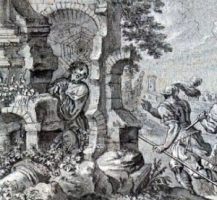
• Felix the Martyr
• Felix of Inpincis
• Felice, Flin
Elder son of Hermias, a Syrian soldier who had retired to Nola, Italy. After his father's death, Felix sold off most of his property and possessions, gave the proceeds to the poor, and pursued a clerical vocation. Ordained by, and worked with Saint Maximus of Nola.
When Maximus fled to the mountains to escape the persecution of Decius, Felix was arrested and beaten for his faith instead. Legend says he was freed by an angel so he could help his sick bishop. Felix hid Maximus from soldiers in a vacant building. When the two were safely inside, a spider quickly spun a web over the door, fooling the imperial forces into thinking it was long abandoned, and they left without finding the Christians. The two managed to hide from authorities until the persecution ended with the death of Decius in 251.
After Maximus' death, Felix was chosen as bishop of Nola, but declined, favoring Quintus, a “senior” priest who had seven days more experience than Felix. He worked to farm his remaining land, and gave most of the proceeds to people even poorer than himself. Much of the little information we have about Felix came from the letters and poetry of Saint Paulinus of Nola, who served at a porter at the door of a church dedicated to Saint Felix, and who gathered information about him from churchmen and pilgrims.
Though Felix died of natural causes, he is normally listed as a martyr because of the torture, imprisonment, and privations he experienced in the persecutions.
3rd century at Nola, near Naples, Italy
• c.255 of natural causes
• buried at Nola, Italy
• for centuries his tomb was the site of pilgrimages
• against eye disease
• against eye trouble
• against false witness
• against lies
• against perjury
• domestic animals
• eyes
• Nola, Italy
• cobweb
• deacon in prison
• spiderweb
• young priest carrying an old man (Maximus) on his shoulders
• young priest chained in prison with a pitcher and potsherds near him
• young priest with a bunch of grapes (symbolizes his care of the aged Maximus)
• young priest with a spider
• young priest with an angel removing his chains
https://catholicsaints.info/saint-felix-of-nola/

Lazarus, Neelakandan, Neelam, Nilakandan, Nilam
Devasahayam was raised a high-caste Hindu, knew Sanskrit, Tamil and Malayalam, and was trained martial arts and archery. He was married, and held a civil service job in the royal treasury. Beginning in 1741, he learned about Catholicism from a French prisoner of war, converted to the faith, and was baptized on 14 May 1745 in the diocese of Kottar, India, taking the name Devasahayam, the Tamil equivalent of the meaning of the name Lazarus.
Lazarus drew the ire of and fell into confrontation with authorities because he mixed with lower castes, something not acceptable for higher-caste people. He was arrested on 23 February 1749 for his faith, he was tortured and abused, and then for three years was hauled from village to village as an example of what would happen to Christian converts. He spent the time in prayer and teaching any who would listen, and priests would sneak him Communion in his cell. Martyr.
23 April 1712 in Nattalam, Tamil Nadu, India
• shot by firing squad 14 January 1752 in Aralvaimozhi, Tamil Nadu, India
• body thrown onto a rock pile and left for wild animals
• remains recovered and buried in front of the altar of the Church of Saint Francis in Kottar, India
2 December 2012 by Pope Benedict XVI
• 15 May 2022 by Pope Francis
• the canonization miracle involved a 24-week fetus who stopped moving and whose heart stopped beating in India in 2013; the mother, who was Catholic and had a devotion to Blessed Lazarus, began praying for his intercession for the baby; within an hour, she felt the baby kicking, tests showed that the heart beat had resumed, and the infant was later born with no complications
https://catholicsaints.info/saint-devasahayam-pillai/

• Apostle of Georgia
• Chrétienne, Christiana, Enlightener, Nano, Nina, Ninny, Nino, Nune, Nuneh, Nunia
Slave. Not originally from Georgia, she may have been brought there by her master when he emigrated, she may have been the spoils of war, or she may have fled her own war-racked homeland and become enslaved after her move to more peaceful Georgia.
She cured a dying child by placing her hair shirt on him, and praying over him. News of this miracle reached the Queen of Georgia, who was suffering an unspecified but untreatable malady. She sent for Nino who replied, “I am a slave. My place is not in a palace.” The Queen went to Nino, who cured her by prayer.
The royal family offered her any reward; she asked that they convert. The recently healed queen was willing, but King Mirian was not. However, soon after, while on a hunt, he found himself surrounded by wild animals. He made one of those well-known deals with God, offering to convert if he survived. The animals left, and in 325 the king asked Constantine for priests and bishops to spread the faith throughout Georgia.
This good work begun, Nino retired to live as a prayerful recluse on a mountainside at Bodbe Monastery, Kakheti, Georgia.
various sources place this as Cappadocia (most sources), Rome, Jerusalem, or Gaul (modern France)
• c.320 at Bodbe Monastery, Kakheti, Georgia of natural causes
• buried in the Cathedral of Mtskheta, Georgia
• Congregation of the Sisters of Saint Christiana
• Georgia
• Georgian cross
• grapevine cross
https://catholicsaints.info/saint-nino-of-georgia/
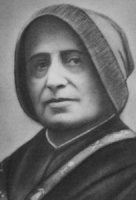
The eldest of ten children born to Angelo and Maria Romano Clerici; hers was a poor but pious family with two of her brothers becoming monks, one sister a Sister of the Precious Blood. Received a Master's degree from the College of the Sisters of the Precious Blood in Monza, Italy. Taught in Lainate, Italy from 1880 to 1883. During her time in college and her work as a teacher, Alfonsa had felt a call to religious life, but her work helped support her family, and she stayed with it. She finally answered the call, and on 15 August 1883 joined the Sisters of the Most Precious Blood in Monza. Teacher at the College in Monza. Director of the College on 22 November 1898.
14 February 1860 in Lainate, Milan, Italy
• 13:30 on 14 January 1930 in Vercelli, Italy of a cerebral haemorrhage suffered on the night of 12 to 13 January 1930 while at prayer
• buried in Vercelli
• in 1965 she was re-interred in the cemetery chapel of the College of the Sisters of the Precious Blood in Monza, Italy
• 23 October 2010 by Pope Benedict XVI
• beatification recognition celebrated in the Piazza of San Eusebio, Diocese of Vercelli, Italy with Archbishop Angelo Amato as chief celebrant
• the beatification miracle involved the healing of a nearly-fatal heart condition of Mr Nedo Frosini following the prayers of his wife, Carla Demi Frosini, for the intervention of Blessed Alfonsa
https://catholicsaints.info/blessed-alfonsa-clerici/
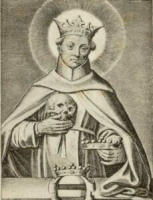
• Godfrey of Ilbenstadt
• Godfrey of Kappenberg
• Gaufrid, Geoffrey, Geoffroy, Geofroi, Gioffredo, Godefrid, Godefridus, Godefroid, Godfrey, Goffredo, Goffrey, Gofrido, Gotfrid, Gothofred, Gottfrid, Gottfried, Jeffrey
Descendant of Charlemagne through his father, of the dukes of Swabia through his mother. Wealthy count in Westphalia with extensive lands. Layman, married to a noble woman. After being brought to an active faith by his friend Saint Norbert of Xanten, Godfrey turned his castle into a Premonstratensian abbey, and in the face of violent family opposition, gave his lands and wealth over to Norbert for use by the Church. He, his brother and his servant, Blessed Giselbert of Cappenberg, then joined the order as monks; Godfrey's wife and two sisters tooks vows as nuns in a convent he founded for them nearby. Built several hospitals and other houses. Was studying for the priesthood when he died.
1097 at Cappenberg Castle, Westphalia, Germany
• 13 January 1127 at the abbey of Ilbenstadt, Germany of natural causes
• relics in churches in Ilbenstadt and Cappenberg, Germany
• Praemonstratensian monk carrying bread in a bowl with two loaves at his feet
• Praemonstratensian monk holding a church
• Praemonstratensian monk holding a skull
https://catholicsaints.info/blessed-godfrey-of-cappenberg/
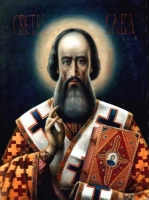
• Rastko Nemanjic
• Sabas, Sabbas
Prince of Serbia, the son of King Stephen I Nemanya. He took the name Sava (Sabas) when he became a monk at Mount Athos. His father later surrendered his crown and became a monk, too, and together they founded the monastery at Chilanari as a house for Serbs. Sava returned home in 1207 when a quarrel between his brothers, Stephen II and Vulkan, broke into civil war. Sava brought monks with him, founded several monasteries, and began the reformation and education of his country, where religion and education had fallen to a low estate. Metropolitan of a new Serbian hierarchy by Emperor Theodore II Laskaris at Nicaea, being reluctantly consecrated by Patriarch Manuel I in 1219. Crowned his brother Stephen II as King of Serbia in 1222. He finished the uniting of his people that had been begun by his father. Translated religious works into Serbian, and gave his people a native clergy and hierarchy. Dispatched to the Holy Land on an ecclesiastical mission, Sava died on the way home.
1176 as Rastko Nemanjic
14 January 1235 at Tirnovo, Bulgaria of natural causes
Serbia, Serbs
https://catholicsaints.info/saint-sava-14-january/

• Odoric Mattiussi
• Odoric Mattiuzzi
• Oderic, Oderik, Odorico, Odoryk
Joined the Franciscans in 1300. Hermit. Priest. Preacher in northern Italy, drawing large crowds to his services. Missionary through the Near and Far East, preaching in Persia, China, Java, Ceylon, and Tibet from 1316 to 1330. First European to reach the capital of the Dalai-Lama. Known as a miracle worker in China. Died en route to Avignon, France to report his findings to the Pope. The written description of his travels were used as a manual for geographers of his day.
1285 at Villanova, Friuli, Italy as Odoric Mattiussi
14 January 1331 at Udine, Italy of natural causes
2 July 1775 by Pope Pius VI (cultus confirmed)
https://catholicsaints.info/blessed-odoric-of-pordenone/
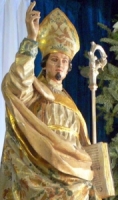
• Fulgentius of Astigi
• Fulgentius of Cartagena
• Fulgencius, Fulgencio
Born to the nobility, son of Severianus and Theodora, a couple known for their piety. Brother of Saint Isidore of Seville, Saint Leander of Seville, and Saint Florentina. Bishop of Ecija, Andalusia, Spain, and a leader of the Spanish Church. Attended the Second Council of Seville in 619.
Cartagena, Spain
• c.633 of natural causes
• buried in the cathedral of Seville, Spain
• Cartagena, Spain, diocese of
• San Fulgencio, Spain
with Saint Isidore of Seville, Saint Leander of Seville, and Saint Florentina
https://catholicsaints.info/saint-fulgentius-of-ecija/
Born to a poor peasant family. Hermit in the forest near Passau, Germany. As his reputation for piety and wisdom spread, the people of the region came to him for advice. Murdered by a man who was envious of Engelmaro's popularity.
Bavaria, Germany
• night of 13 to 14 January 1100 near Passau, Germany
• the killer hid the body in a snow drift
• the body was discovered during the spring thaw
• relics transferred to the Promenstatensian church in Windberg, Germany in 1331
• a custom developed in Winberg called "searching for Engelmaro" where the villagers go "in search" of the body of Engelmaro, find it (the relics), and then take the relics in procession from the forest back to the town
• cattle
• good weather
• harvests
• peasants
https://catholicsaints.info/saint-engelmaro/
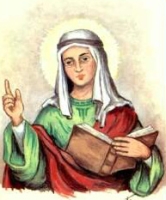
• Macrina of Caesarea
• Macrina of Neo-Caesarea
• Macrina the Senior
Grandmother of Saint Basil the Great, Saint Gregory of Nyssa, Saint Peter of Sebaste, and Saint Macrina the Younger, and apparently raised Basil. Spiritual student of Saint Gregory Thaumaturgus. She and her husband lived in hiding in a forest at Pontus for seven years during the persecutions of Diocletian, nearly starving several times. Widowed.
c.340
• against poverty
• poor people
• widows
• hermitess with two stags near her
• hermitess with two hinds near her
https://catholicsaints.info/saint-macrina-the-elder/
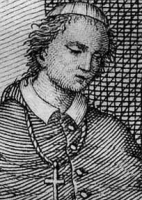
Dacius, Dasius, Dazio
Born to the nobility, a member of the Alliati family. Known for his learning and his personal piety. Bishop of Milan, Italy c.530. Ordered the history of the Church in Milan known as Historia Datiana. Imprisoned and exiled by Arian Ostrogoths for defending orthodox Christianity. Relocated to Constantinople where he supported Pope Vigilius against Emperor Justinian in the Three Chapters Controversy of 545. Attended the Council of Constantinople in 551 which condemned the Patriarch Mennas.
552 in Constantinople of natural causes
https://catholicsaints.info/saint-datius-of-milan/
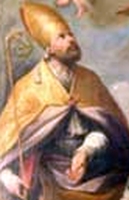
Potito
Son of a rich pagan. Convert. Exorcised a demon from the daughter of Emperor Antoninus who then had Potitus arrested, tortured and executed for being a Christian. Martyr.
Sofia, Bulgaria
• beheaded with a sword in the diocese of Naples, Italy
• buried in the swampy area of the river Carapelle
• some relics enshrined in Ascoli Satriano, Italy
• Cerignola-Ascoli Satriano, Italy, diocese of
• Tricarico, Italy
https://catholicsaints.info/saint-potitus/
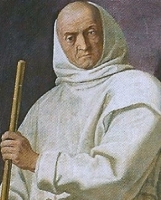
Odon
Carthusian monk. Priest. Prior at Geyrach, Slavonia. Following difficulities with his bishop, he resigned his position to become chaplain for several decades to the convent at Tagliacozzo, Italy.
c.1105 at Novara, Italy
1200 at Tagliacozzo, Italy of natural causes
1859 by Pope Blessed Pius IX (cultus confirmed)
https://catholicsaints.info/saint-odo-of-novara/
Lord of Hauterives, Drôme, France. Father of Blessed Amadeus of Lausanne. With 16 of his men, he retired to become a Cistercian monk at Bonnevaux Abbey, and then he and his son moved to Cluny Abbey, both in France. Founded monasteries at Léoncel, Mazan, Montperout, and Tamis.
Hauterives, Drôme, France
c.1150 at the monastery at Bonnevaux, France of natural causes
https://catholicsaints.info/blessed-amadeus-of-clermont/
Barba'shmin, Barbascemin, Barbasceminus
Bishop of Seleucia and Ctesiphon, Greece in 342. Arrested and tortured with sixteen priests in the persecutions of King Shapur II; the names of his companions have not come down to us. Barbasymas was offered a cup filled with gold coins if he would worship the Persian god; he declined. Martyred with the sixteen priests.
beheaded in 346 in Persia
https://catholicsaints.info/saint-barbasymas/
Carlos of Alcubilla de Nogales
Franciscan Capuchin priest. Martyred in the Spanish Civil War.
17 July 1902 in Alcubilla de Nogales, Zaragoza, Spain
14 January 1937 in El Escorial, Madrid, Spain
13 October 2013 by Pope Francis
https://catholicsaints.info/blessed-pablo-merillas-fernandez/
• Eufrasio of Arvenia
• Euphrasius
Bishop of Arvenia, Aquitaine (modern Clermont-Ferrand, France). Saint Gregory of Tours wrote in praise of him.
c.515 of natural causes
https://catholicsaints.info/saint-eufrasio-of-clermont/
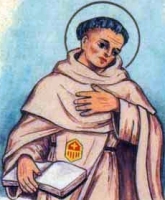
Mercedarian friar and evangelist.
buried in Mercedarian priory church at Barcelona, Spain
https://catholicsaints.info/blessed-william-de-sanjulia/
Premonstratensian monk. Canon of the monastery of Mariënweerd at Utrecht, Netherlands.
early 12th century Netherlands
14 January 1184 of natural causes
https://catholicsaints.info/blessed-rainer-of-arnsberg/
Caldéold, Cadéol, Eolad
Archbishop of Vienne, France from 653 to 664. Promoted monasticism in his diocese.
664 of natural causes
https://catholicsaints.info/saint-caldeoldus-of-vienne/
Glicerio, Glykerios, Glicerius
Deacon. Tortured and martyred for his faith.
drowned in Antioch, Syria
https://catholicsaints.info/saint-glycerius-of-antioch/
Eufrasio
Bishop. Martyred by Arian Vandals.
in North Africa
https://catholicsaints.info/saint-euphrasius-the-martyr/
Firmin
Bishop of Mende, France.
https://catholicsaints.info/saint-fermin-of-mende/
Martyr. No other information has survived.
https://catholicsaints.info/saint-successus-of-africa/
Priest in Rome, Italy. No other information has survived.
https://catholicsaints.info/saint-felix-of-rome/
Martyr. No other information has survived.
https://catholicsaints.info/saint-paul-of-africa/
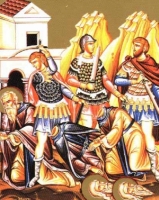
A group of 38 monks on Mount Sinai who were martyred by pagan desert Bedouins. We know little about them, have but the names of four of them – Isaias, Jesaja, Sabas and Theodolus.
martyred by Bedouins
https://catholicsaints.info/martyrs-of-mount-sinai/
A group of 43 monks in the Raithu Desert near Mount Sinai, Palestine, near the Red Sea. They were martyred for their faith by desert Bedouins. Their names have not come down to us.
martyred by Bedouins
https://catholicsaints.info/martyrs-of-raithu/
CatholicSaints.Info Portable Edition